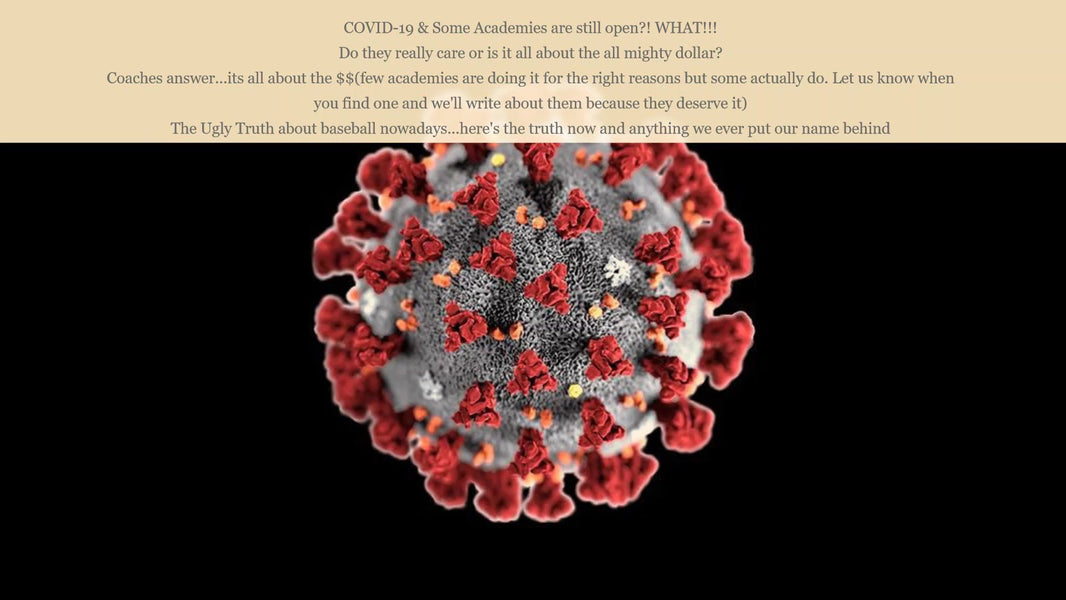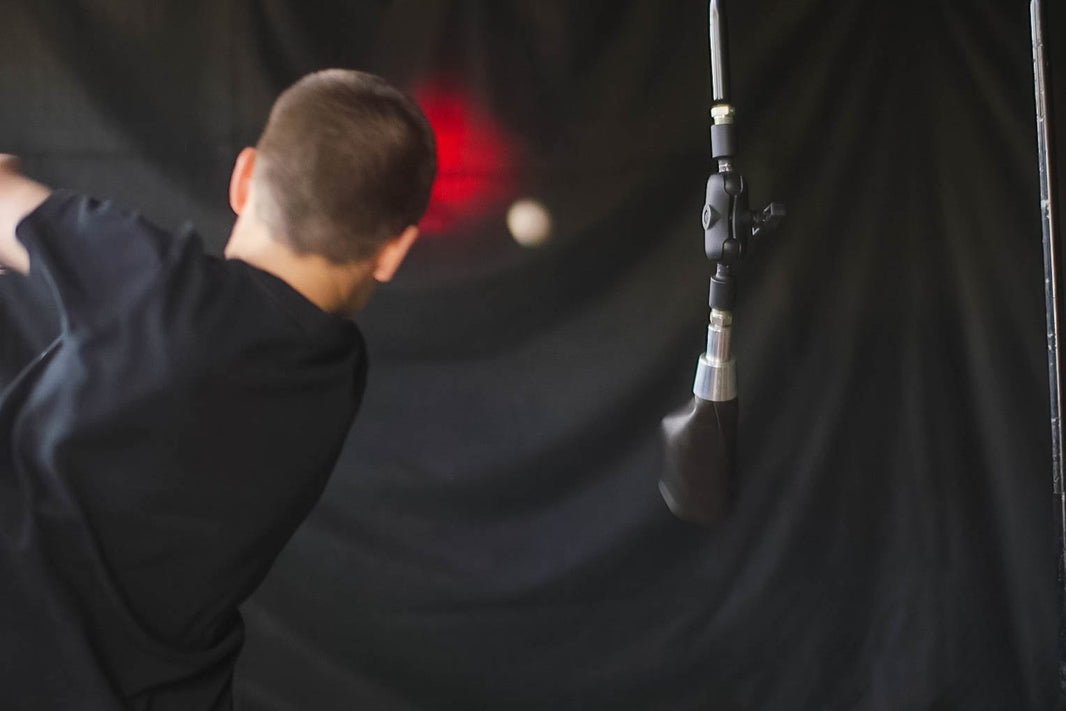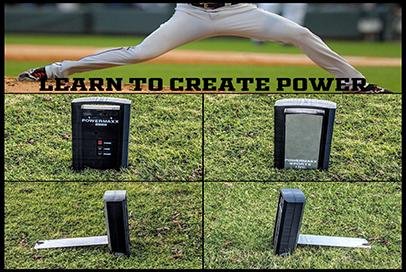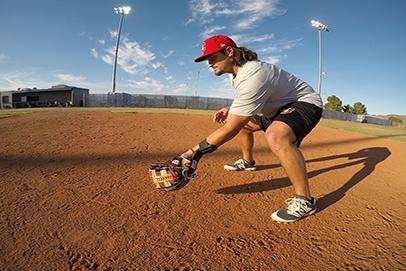Youth Baseball Hitting is no different than hitting in the Major Leagues….
“ You Can’t Hit It … If You Can’t See It. “
A very simple yet powerful statement, considering it is quite difficult to hit a ball when you can clearly see it approaching, but all but impossible to hit if you can’t see it, or see it too late, little league baseball hitting or MLB hitting.
If you're a student of this site, and I hope you are, you're probably thinking "I think we've already covered this subject in another segment." Senility setting in? No.
You'd be partially correct. The reason we're re-approaching the subject of picking up the baseball out of the pitcher's hand is because it's Imperative to the success of hitting.
It's a scientific fact ... a 100 mph fastball takes .5, that's one-half of a second to reach home plate. You have absolutely NO time to waste in trying to hit the ball.
Now you'll never see a 100 mph fastball, but the same principles hold true for an 80 mph fastball. Let's review:
Pick the ball up ASAP from the pitcher and you:
(1.) The longer you’re able to see the ball, the longer your brain has to determine if it’s a ball or a strike…
(2.) The longer you have to determine what kind of pitch it is, fastball, change or curve ball.
(a.) A fastball will start on a high plane then drop lower as it approaches the plate.
Youth Baseball Hitting- Right Angle of Arm

(b.) A curve ball and change up will start on a high plane, but drop and move away or in as it approaches the plate, the longer you can follow the ball the better your chance of identification …
(3.) As you progress to the higher and older levels of play you will not be able to adjust to all the pitches a pitcher can throw, therefore you’ll look for a particular pitch or zone, and the more time the better.
Youth Baseball Hitting - Tip 1
Pitchers will attempt to hide the baseball from the hitter as long as possible by twisting his body, using a high leg kick and a half dozen other tricks which has the batter watching legs and arms flailing, but not seeing the ball.
The best method for defeating the pitcher’s hiding methods is to pick up the ball at the pitcher‘s
“ Release Point,” which is the position, location, of the ball in the pitcher’s hand immediately prior to the baseball leaving his hand.
Youth Baseball Hitting - Look At Hat Level
For the most based on his height, weight, stride, arm angle and several other factors. We don’t need to be concerned as to Why the release point is at a certain position, only Where it’s located.
Since every pitcher is different, it’s very important we evaluate every pitcher as soon as possible in order to estimate his Natural release point, and for that we capitalize on the Four Main opportunities to:
(a.) Analyze the pitcher…. Wind-up, Control
(b.) Discover His release point …. Main Objective
(c.) See what pitches he throws…. Knowing what to expect gives you the advantage
(1.) Pre-game Warm-Ups … Unless you are involved in a specific task, such as taking infield or listening to pre-game instructions from your coach, your eyes should be glued to the opposing pitcher, across the diamond, throwing his warm up pitches to the catcher.
Even from a distance you can see if his release point seems consistent or not. You may not be able to tell if he throws a curve ball, slider or change up from that distance, but you can tell if the ball is thrown at different speeds or he seems to bounce a particular pitch, indicating lack of control. Just this one bit of information allows you to know you may have to contend with hitting at least two different types of pitches.
Youth Baseball Hitting - Watch Warm Ups
(2.) Warm up pitches between innings… which as the game progresses could become very important. As the pitcher tires, he may drop his elbow which will change the release point, or may try to come more overhand in order to stay on top of the ball, again changing the release point. Realizing the difference of location and probable cause, will give you an advantage over the pitcher.
(3.) On deck … Your prime objective while waiting on deck, is to observe and attempt to time the pitcher’s motion and delivery. Physically swing and Visualize you timing and hitting the ball as he throws to the current hitter.
(4.) While at Bat … This is when we verify our evaluation. Until we actually face the pitcher, we actually only have an educated guess as we step into the batter’s box. However, instead of starting at step 1 of a 5 step evaluation process, we begin at step 5...final conformation of the evaluation.
It shouldn’t take more than two (2) pitches to verify Release Point, but unless a team mate has identified the other types of pitches which may be thrown, it may take several pitches or perhaps an additional time at bat to verify that.
Youth Baseball Hitting - Passing The Hat
Youth Baseball Hitting Tip 2 Release Point Issues:
We’ve already established the importance of locating the release point as far as seeing the ball the greatest amount of time before we are forced to swing, but there may be other clues lurking in the release point.
(A.) Pitchers are coached Not to do this, but nobody’s perfect and you can develop a bad habit nearly immediately under the right circumstances.
Pay special attention that the pitcher does not have a different release point for different pitches. For instance, should you notice he comes more overhand when throwing a fastball than a curve ball, it’ll immediately tell you what pitch is coming.
The combination of seeing the ball early and knowing what type of pitch is coming, thus knowing how it should re-act, gives you a huge advantage over the pitcher.
(B.) Some pitchers may alter their release point in certain situations. For instance, if you notice the pitcher will drop down sidearm on every 0-2 count in an attempt to get the strike out through the element of surprise, you can be ready for it and won’t be frozen by the surprise of a sidearm delivery.
(C.) Because of their unorthodox windup and delivery, it is possible for some pitchers to offer the sight of the ball Too Soon. This, seemingly mistake, maybe yes…maybe no, on the pitcher’s part can have disastrous consequences on the hitter
For example, instead of opening up correctly with his throwing arm extended straight backwards, he over extends, which allows the hitter to see the ball. This may at first appear to give the batter an advantage, but it’s actually a disadvantage.
Unless conditioned to not detract from your vision, concentration and anticipation of the release point, the eye will fixate on the ball, which is behind the pitcher’s back, then lose visual contact as he brings his arm behind his body, then be forced to quickly alter the focus back to the anticipated release point, where the ball has most likely already left.
Youth Baseball Hitting - Surprise Delivery
Picking the ball up after it’s already been released is far too late to be able to formulate everything involved in whether or not to swing and then execute a good swing through the strike zone.
Youth Baseball Hitting - Summary
(1.) Every Pitcher has a different release point….
(2.) Determine where that release point is A.S.A.P
(3.) Constantly monitor the release point to make sure it does not change through fatigue or by design, such a throwing a different pitch.
(4.) If you notice a pattern, inform your team mates. Most won’t be nearly astute as you are and can use the help.











